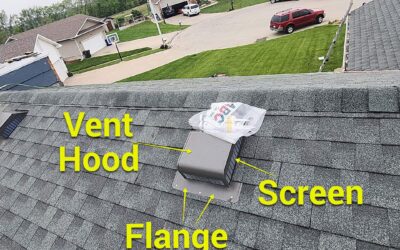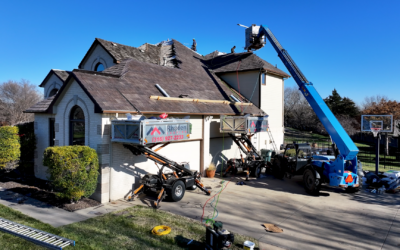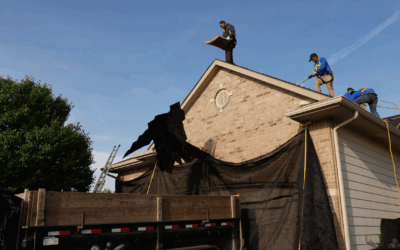Are you a commercial business owner or manager with an aging metal roof? Perhaps the metal has started to corrode in places, the screws and fasteners have started to loosen, or maybe water has started to make its way into your building. This leaves building owners contending with a complete tear-off and replacement, which is a large expense. There is an alternative to complete replacement, which is what this article will explore: retrofits. Retrofits of metal roofs add a single-ply roof membrane over an existing metal roof. If you’re a building owner with a failing metal roof, this article will detail retrofits and when they can be solvent for your building.
In this article, we will delve into the world of metal roofing and explain the situations in which it makes sense to tear off your existing roof and replace it with new metal. We will also discuss when it makes more sense to cover your existing roof with a new metal roofing system.
What Causes Commercial Metal Roofs to Fail?
When we inspect an aging metal roof, there are a few key indicators that a metal roof is near the end of its usable life. Although metal roofs have some of the longest warranties in the industry, all roofs are liable to fail as they reach the end of their expected service life. Metal roofs do a lot of expanding and contracting as they heat up and cool down.
This continual expansion and contraction results in movement that can slowly cause the metal screws that secure the panels, and the neoprene gaskets that surround the screws, to shift and move over time. The fasteners and their gaskets eventually work their way up, creating a small gap where water can penetrate. Once water starts to penetrate the outer layer of metal, we begin to see corrosion and damage to the insulation and decking below.
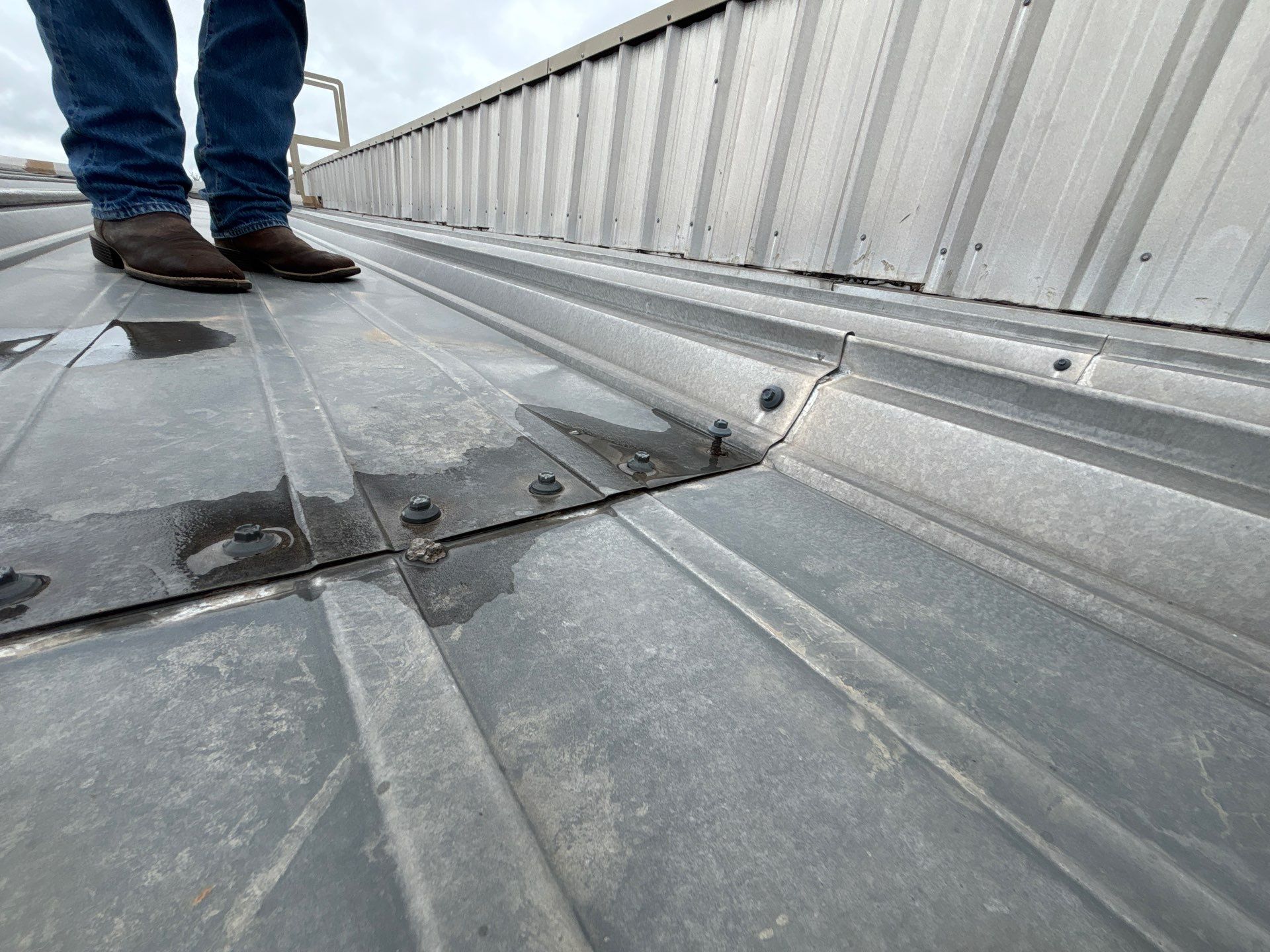
Both images show fasteners pulling out from an r-panel metal roof. On this roof system, dozens of fasteners had pulled out, culminating in interior leaks and substrate damage.
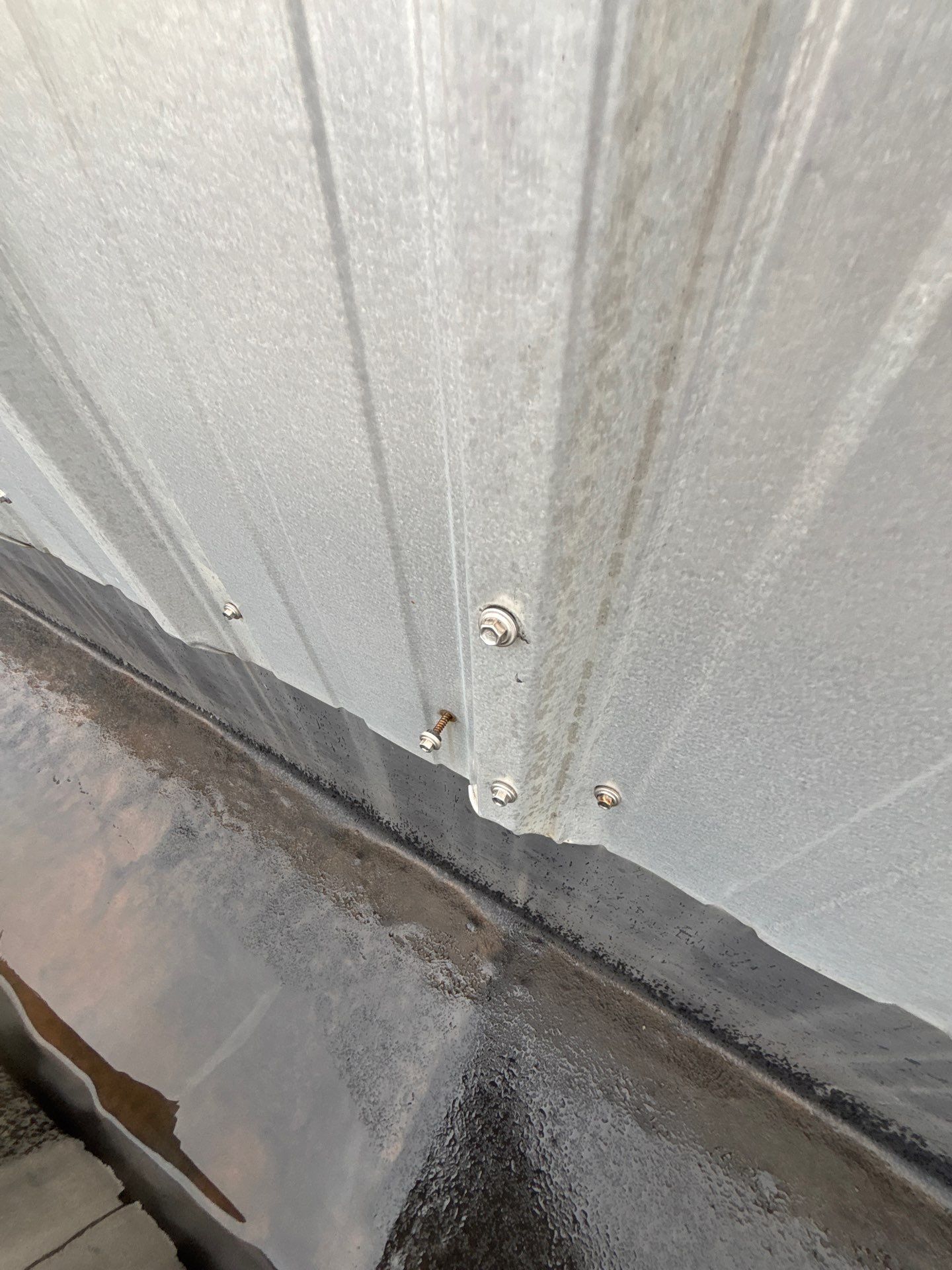
What Is a Metal Roof Retrofit, and How Does It Work?
When your metal roof reaches the end of its service life and repairs can’t address it, there are two basic options.
- Tear off the existing roof and install a new one.
- Retrofit the existing roof by building a new membrane system on top of it.
Prior to performing a retrofit, the existing roof is thoroughly cleaned. Typically, a retrofit will involve a 3-part system including a layer of EPS foam, a layer of cover board, then a layer of single-ply waterproofing membrane, usually TPO. This process is referred to as a flute fill retrofit. Retrofitting your existing roof can be a smart option for myriad reasons. However, not all metal roofs are viable candidates for a flute fill retrofit.
What Are the Disadvantages of Replacing Your Commercial Metal Roof?
- Operational Disruptions: Tearing off a metal roof involves falling debris, exposure to weather, and potentially extensive interruptions to daily operations. Most building owners and facility managers are not eager to temporarily shut down their operations or relocate for a roof replacement. All of this costs your business time and money that should be avoided when possible. For these reasons, it is important to consult an experienced and licensed roofing professional to determine what can be done to avoid unnecessary delays and unwanted costs.
- Wasted and Recycled Materials: The good news is that some types of metal roofs are 100% recyclable, reducing the carbon footprint associated with extraction and the fabrication of new metal sheets. However, the insulation below the roof will likely be thrown in the landfill unless your municipality has recycling options. Insulation that makes its ways to landfills, depending on its type, will either break down partially, releasing harmful and toxic compounds into the environment or it will remain intact for 50-1,000 years, contributing to landfill accumulation. Neither option is desirable. One common exception is cellulose insulation. Although cellulose insulation is not yet commonly used in commercial applications, it is compostable, recyclable, and will completely break down in the landfill, with minimal impact on the environment.
What Are the Advantages of a Retrofit for Your Commercial Metal Roof?
For a deeper look at how a retrofit system can solve many issues with aging metal roofs, check out our full breakdown on the benefits of flute fill retrofit solutions. Below is a summary of retrofitting’s benefits:
- Minimal disruptions to operations: Similar to a layover compared to a complete replacement on a membrane roof, retrofitting doesn’t require the removal of the existing roof layer — metal, in this case.
- Fast and cost-effective: Because retrofits don’t require the roofing crew to tear off the existing system, retrofits have shorter project timelines than replacements. As a result, labor costs for a retrofit are significantly lower than replacing the existing roof system.
- Energy cost savings: White TPO membranes have an albedo of approximately .8, which means they reflect roughly eighty percent of the sun’s UV radiation. A clean TPO membrane can reduce your energy bill.
- Brand new 20-year warranty: Retrofits installed to manufacturer’s specifications are durable roofing systems that can yield extensive warranties. Qualified roofing contractors installing new roofing systems that meet manufacturer’s specifications often obtain 20-year warranties. Retrofits can obtain the same warranty while obtaining the benefits listed above.

EPS insulation fitted between panels during a flute-fill retrofit installation.
When Should You Replace a Commercial metal Roof Instead of Retrofitting?
The decision to replace or retrofit your aging metal roof is a complex one, best made on a case-by-case basis. But here are some of the primary considerations.
- Steep Roofline: If you have an irreparable steep metal roof, we will most likely recommend tearing it off and replacing it with a new metal roof. Steep metal roofs are not ideal candidates for retrofits with flute fill because the EPS foam boards that are used as insulation are simply laid in the metal valleys and are free floating until they are secured down by the cover board’s fasteners. Coverboard functions as both an additional layer of insulation and a smooth, solid substrate to fasten the new onto. If your roof is too steep, the EPS foam pieces will slide off.
- Street View: Additionally, if you have a steep roof that can be seen from the street, a retrofit is not the best option. The top layer of a retrofit is typically a TPO membrane. TPO is a bright white roofing membrane and is never meant to be seen from the street. It often reflects too much sunlight and creates glare for passers-by when it is placed at a steep angle. Over time, it collects dirt and debris and begins to look dirty. If you have a steep metal roof that can be seen from the street, this is a situation in which it makes more sense to remove the existing metal roof and replace it with a new one.
This striking red metal roof is the type of roof we would recommend being replaced.
Can You Install a Metal Roof over an Existing Metal Roof?
The short answer is no. Metal over metal is not a good idea for several reasons.
- Fastening Problems: Metal roofs are commonly fastened using screws and gaskets every 6 inches on-center. So when the second metal roof is fastened, the new screws need to penetrate all the way through the insulation and puncture the original metal roof. This creates holes in the original metal roof which results in entry points for possible water intrusion down the road.
- Sealing the Edges: Metal-over-metal retrofit is not considered best practice, primarily because of challenges with properly sealing the roof edges against wind and water. Although there are many different types of metal roofing material, including standing seam, corrugated metal, imitation tile, and architectural metal panels, they all share a common trait: they are relatively flat surfaces. Placing one flat sheet over another is like stacking two slices of bread with a beef patty in between. Without a solid seal at the edges, you’re inviting leaks, uplift, and even critters. Since metal on metal is not an industry standard solution, there are no established best practices for how to make this work.
- Warranty and Insurance Issues: Because metal roofs are not designed to be placed atop existing metal roofs, it can be difficult to obtain quality warranties. Similarly, insurance companies may not want to cover this type of unconventional solution. Check with your insurance carrier for more information.
Key Takeaways
- Metal roofs fail over time due to thermal expansion, contraction, and fastener degradation.
- Full roof replacement may be necessary for steep, visible roofs or roofs in a state of disrepair.
- Retrofitting is a cost-effective alternative for low slope or flat roofs that are in good condition and are not visible from the street.
- Retrofits reduce operational disruptions and are typically faster to install.
- Flute fill retrofits improve insulation, reduce energy costs, and can yield a new warranty.
- Every roof should be evaluated by a professional to determine the most practical, durable solution for any given roof.

